Do you want to build automated workflows with different plugins and tools on your WordPress website? With Thrive Automator, you can configure what happens on your website when a specific action is performed.
You can set up triggers that’ll be fired when an event or action occurs.
Some use cases of this feature could be:
- Add all WordPress users to an autoresponder when they enroll after a certain date. Here the trigger would be “User creates a new account,” and the action “User gets added to the autoresponder.”
- Enroll all users to a Thrive Apprentice course when they clear a quiz on your website. The trigger here would be “User completes a quiz,” you can add conditions like which quiz, the quiz result, etc., to act “Enroll user to the course.”
In this article, we’ll show you how to start with Thrive Automator and build your first automation.
- Installing and Accessing Thrive Automator on Your Website
- Understanding the Thrive Automator Dashboard
- Creating Your First Automation in Thrive Automator
- Frequently Asked Questions About Thrive Automator
Installing and Accessing Thrive Automator on Your Website
To start with Thrive Automator, please ensure you have installed and activated Thrive Automator following this method.
Once Thrive Automator is installed, click the Go to the Thrive Themes Dashboard button. As the button text suggests, this will take you to the Thrive Dashboard.
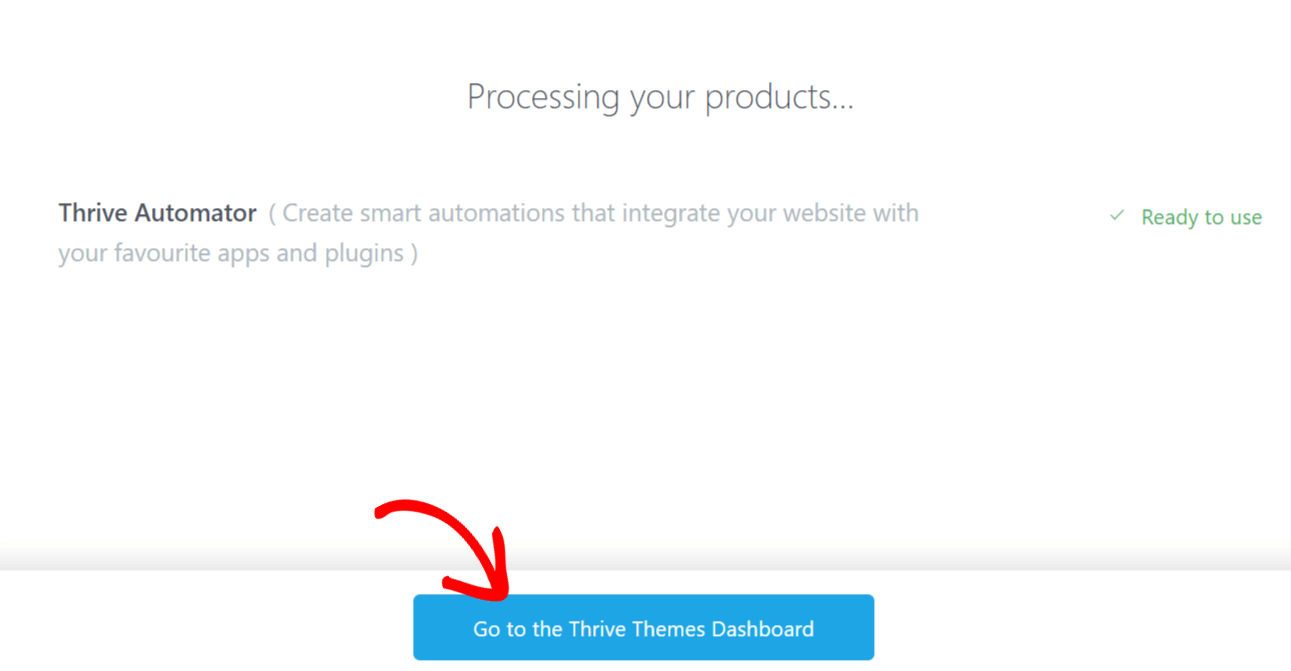
You can also go to the Thrive Dashboard by opening the WordPress admin area and navigating through the Thrive Dashboard >> Thrive Automator.
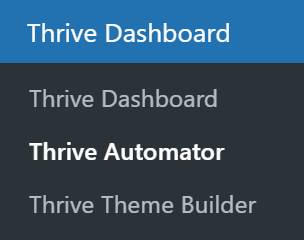
Understanding the Thrive Automator Dashboard
You’ll be taken to the Thrive Automator page when you click on Thrive Automator under Thrive Dashboard in the WordPress admin panel.
The following options are on the Thrive Automator page in the left panel.
- Automator: where you’ll see all the automation listed.
- Logs: where you’ll see the activity logs and error messages, if any.
- Apps: where you’ll find all the API connections you build to use in Automator.
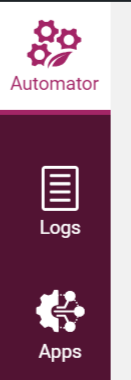
Automator
If you open Thrive Automator for the first time, all the pages under these options will be blank.
On the other hand, if you’ve created automations before, you’ll see them listed on the page.
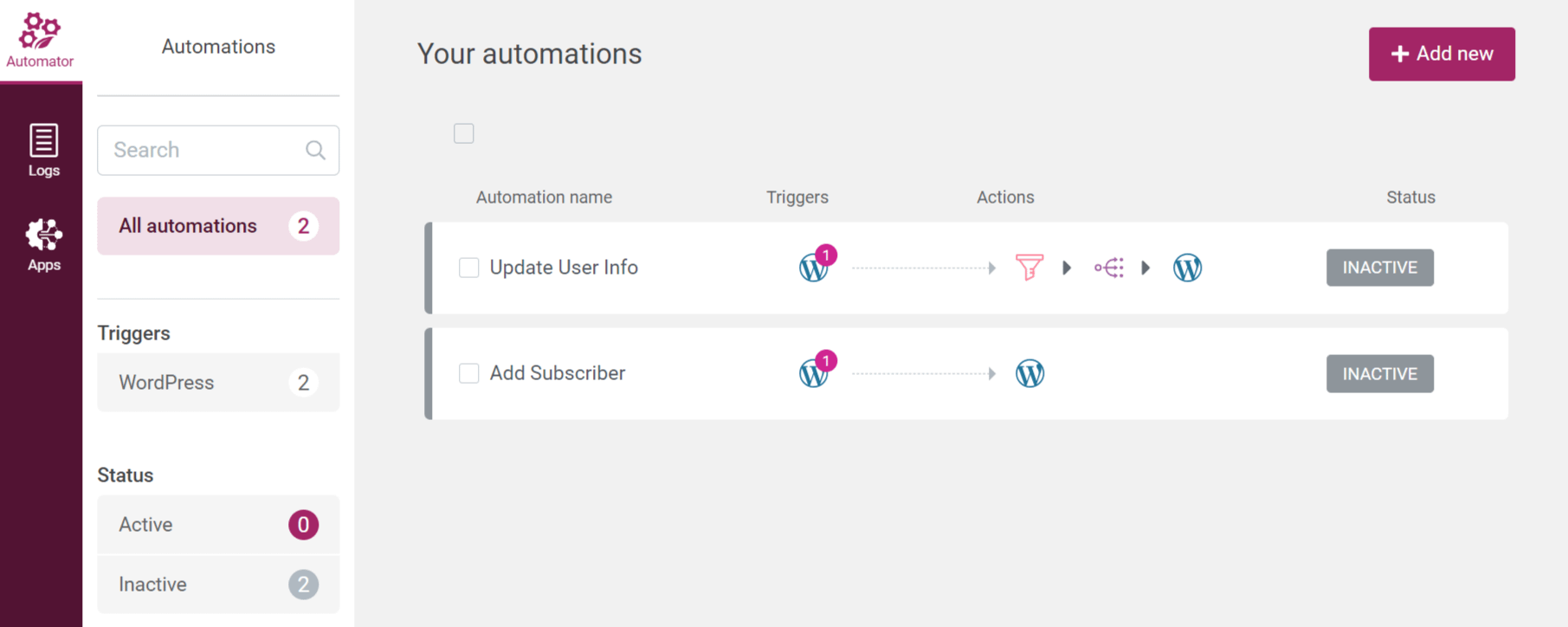
The left panel on this page will show you the number of present automation, and the different triggers applied.
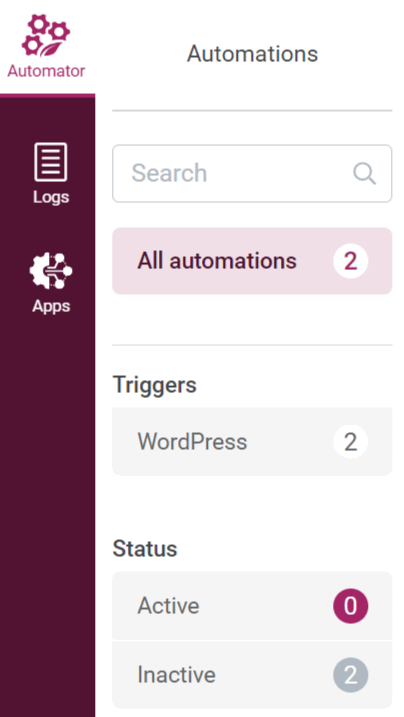
Logs
Not everything may work perfectly. It may be affected by a third-party plugin on your website, the internet connection, or a server-side error interrupting the automation.
The Logs section in the Thrive Automator panel will list the errors (if any) when automation fails to load or complete. You can read our document to learn more about the Logs section in Thrive Automator.
Apps
The Apps or the Applications page in Thrive Automator lists all the API connections built for automation to work.
You can see use this section to view, edit and add any new API connections you may need.
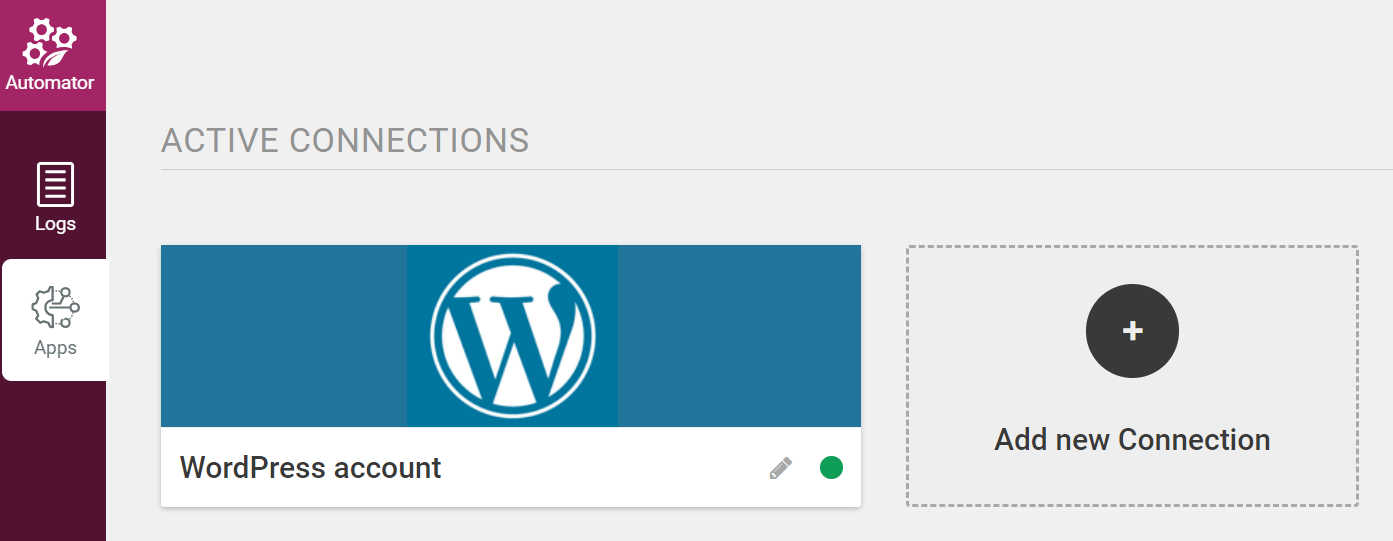
We’d recommend you read our detailed documentation to learn more about the Apps section in Thrive Automator.
Creating Your First Automation in Thrive Automator
After you’ve installed the Thrive Automator or accessed it through the Thrive Dashboard, you’ll be taken to the Thrive Automator page, where you can create your first automation by clicking the Create your first automation button.
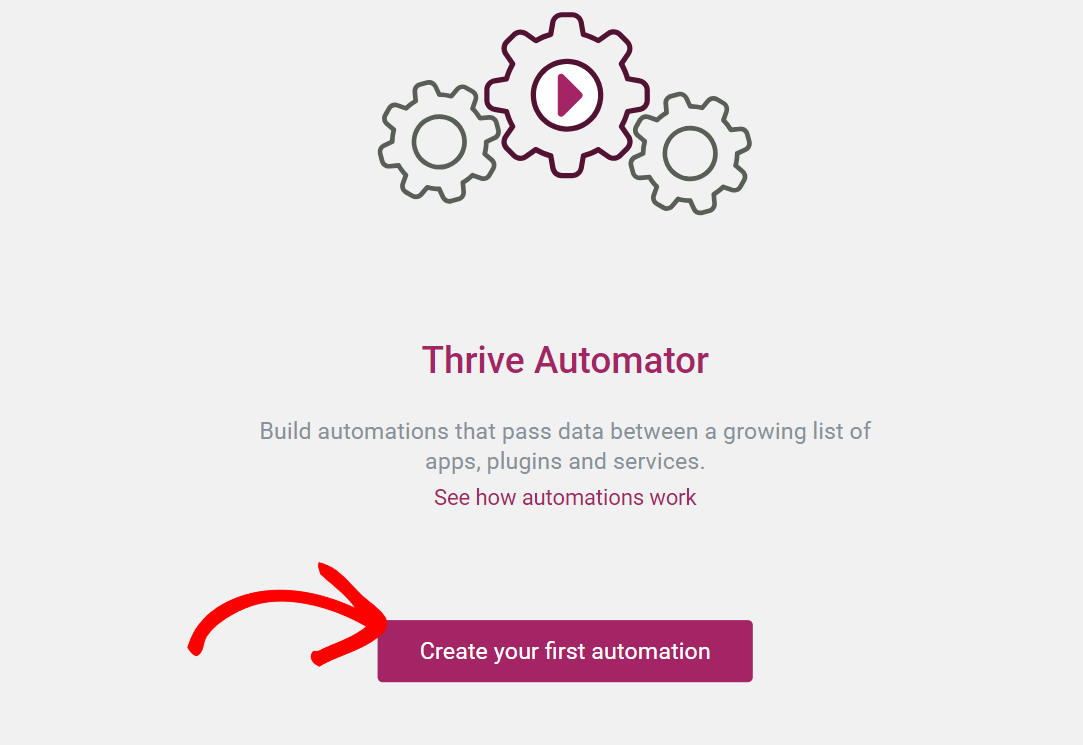
If you’ve already created automation before, you can start creating another one by clicking the + Add new button on the top right corner of the Automator page in Thrive Automator.
When you start creating automation, give it a meaningful name. This can be done by clicking the pen icon beside the default name on the page’s top left corner.

Once you finalize the name for your automation, you can start creating the automation by setting up triggers.
Setting Up Triggers in Thrive Automator
Triggers are events that, when they occur, pass signals to perform the related action.
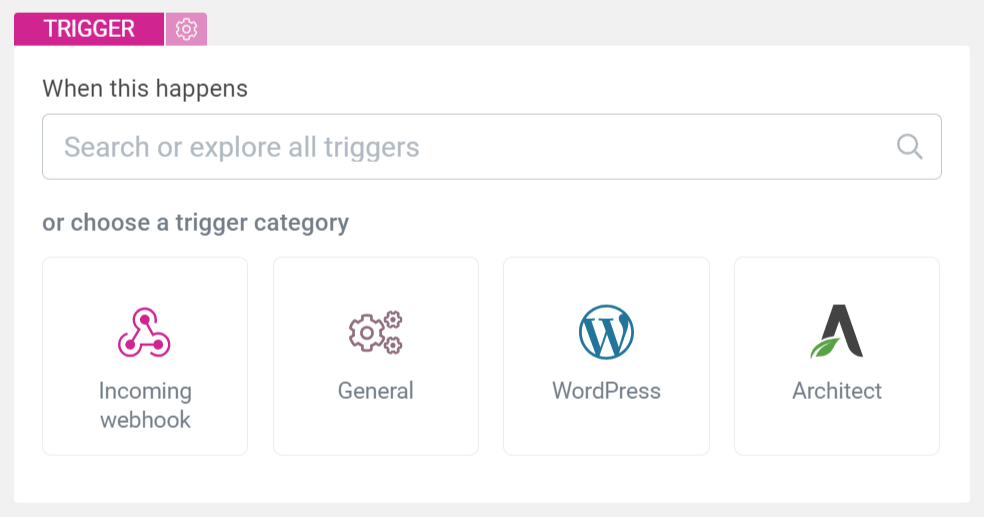
Under the triggers window, you can search or explore triggers using the search bar.
Available triggers are divided into different categories, as listed below.
- General: that include triggers based on specific date and time.
- WordPress: that includes triggers related to the WordPress account. It tracks events like a user leaving a comment, logging in or logging out of his account, resetting a password, publishing a post, updating the profile, etc.
- Architect: that includes events occurring in Thrive Architect. This tracks events like the submission of a normal or a registration form.
- Incoming Webhook: that helps mark triggers based on incoming webhooks.
Similarly, additional trigger categories will be added depending on the different Thrive products installed on your website.
You can read our document to learn more about Triggers in Thrive Automator.
Let’s consider that you want to assign the Subscriber user role to a newly added WordPress user.
For example, select the “User creates a new account” trigger in the search bar.
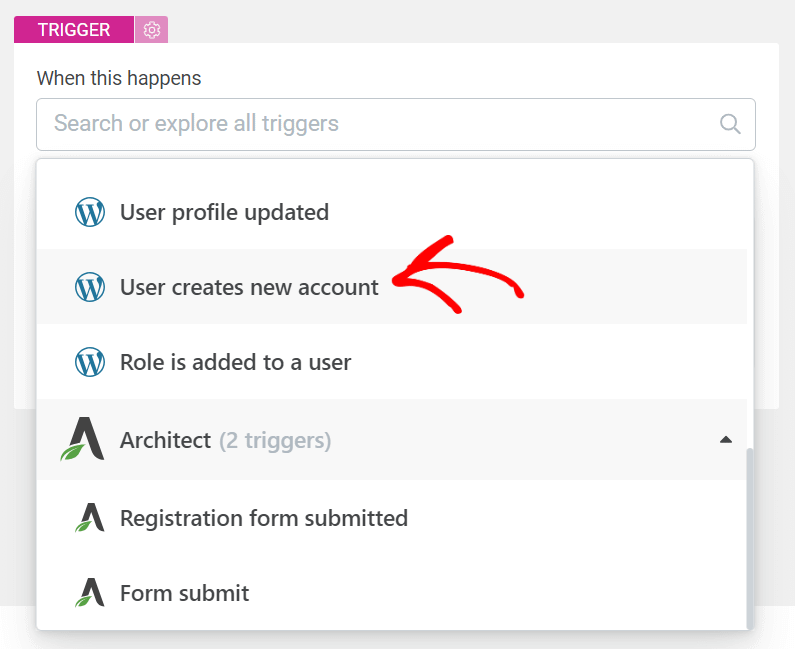
Once you select a trigger, you’ll need to select a condition of when this trigger will push the action.
Available conditions in this particular trigger include the following:
- Always trigger
- User ID
- Last logged in
- Registration date
- WordPress username
- User role
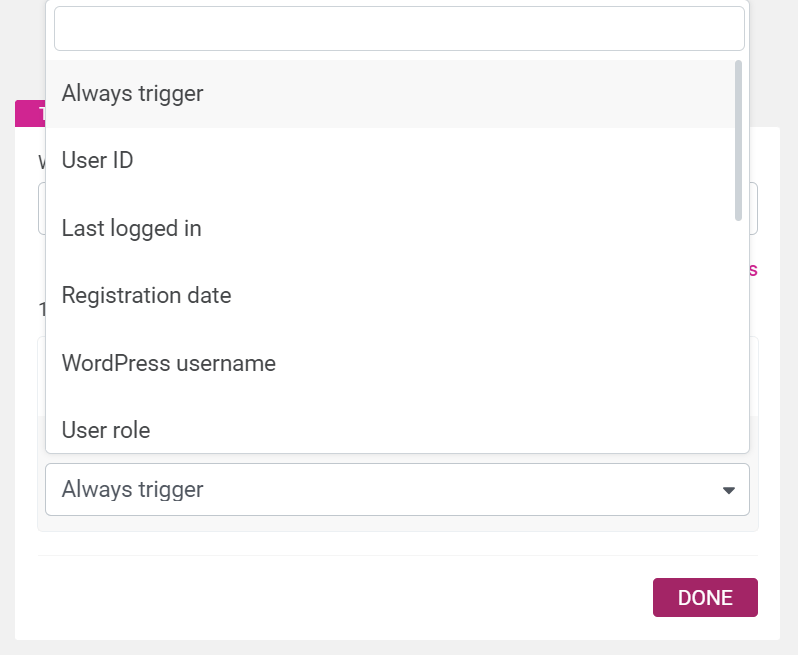
After you select a trigger and the condition, click the Done button.
In the next step, you’ll see a flowchart where you’ll see the trigger you’ve just selected.
Adding Actions and Filters to an Automation
To add an action, a filter, or a delay in the automation, click the plus (+) icon below the trigger in the flowchart.
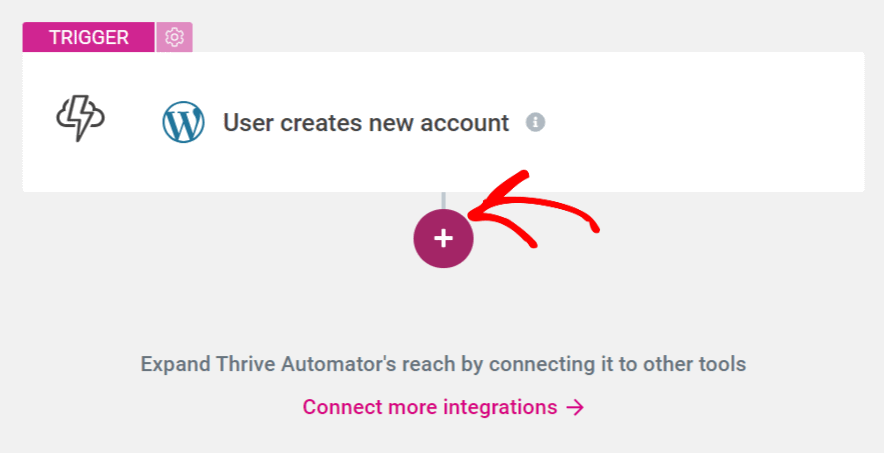
When you click the plus (+) icon, you can select the following action to add to the automation.
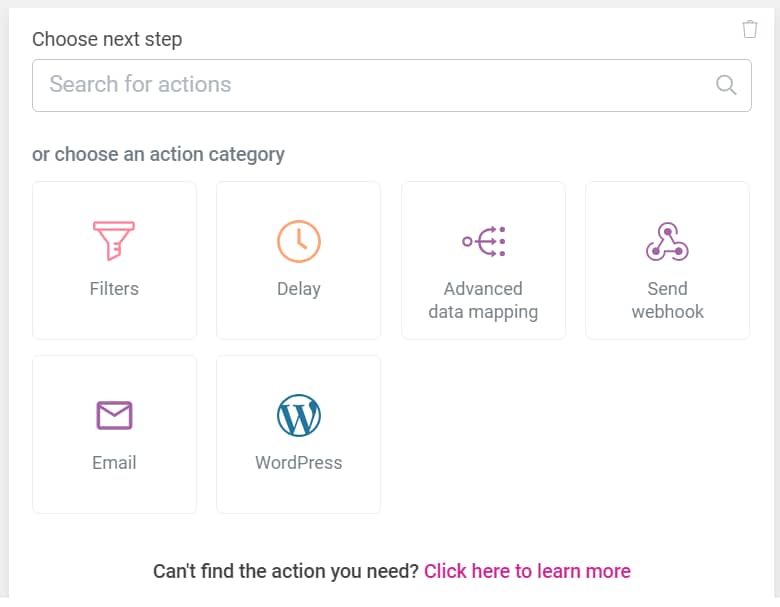
You’ll see a block containing action categories you can select from when you click the icon. The action categories include the following:
Filters: that help you add filters to decide when the action should be performed.
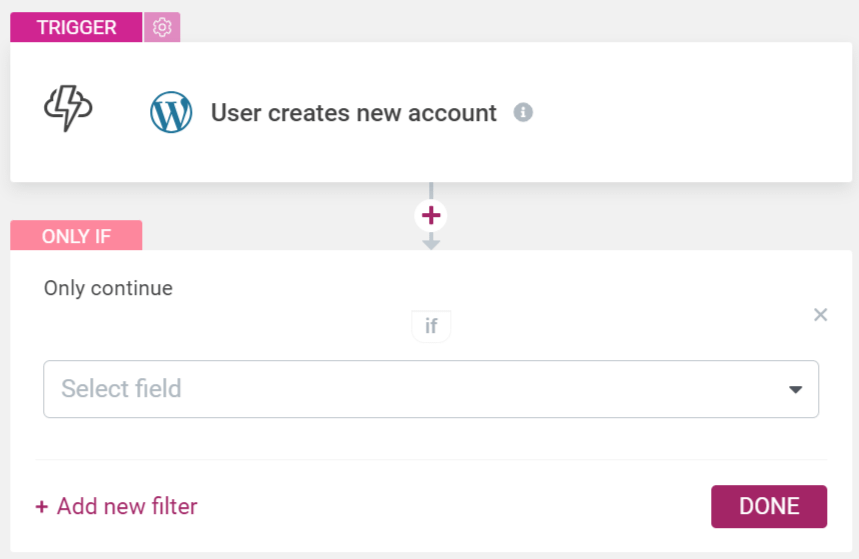
Delay: allows you to add a period you’d like to wait until the action is performed.
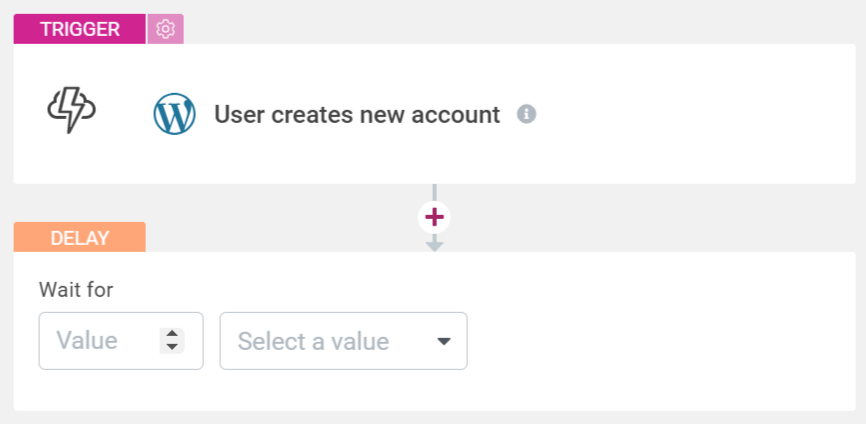
Advanced data mapping: lets you map specific user data fields. You can read more about Advanced data mapping in our document.
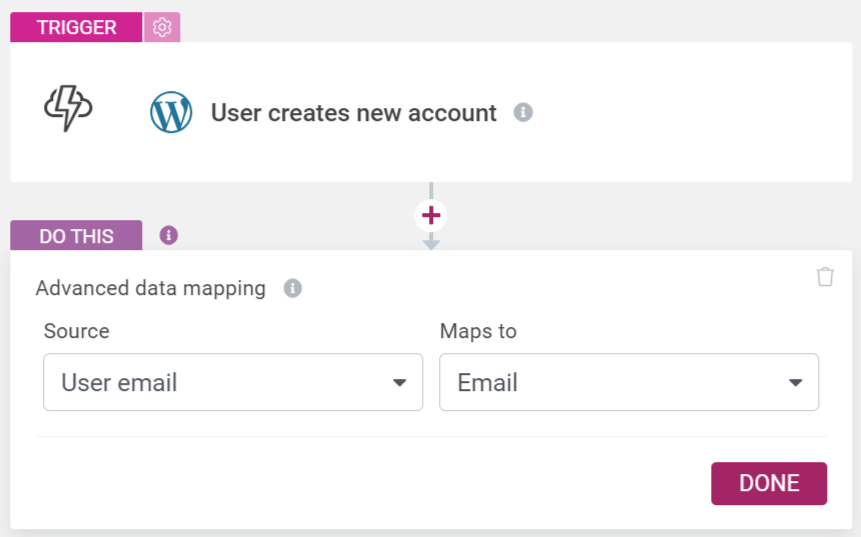
Send webhook: allows you to send a webhook by entering the webhook URL, the request type, header, etc.

Email: where you can decide whether to add or tag a user in an autoresponder.
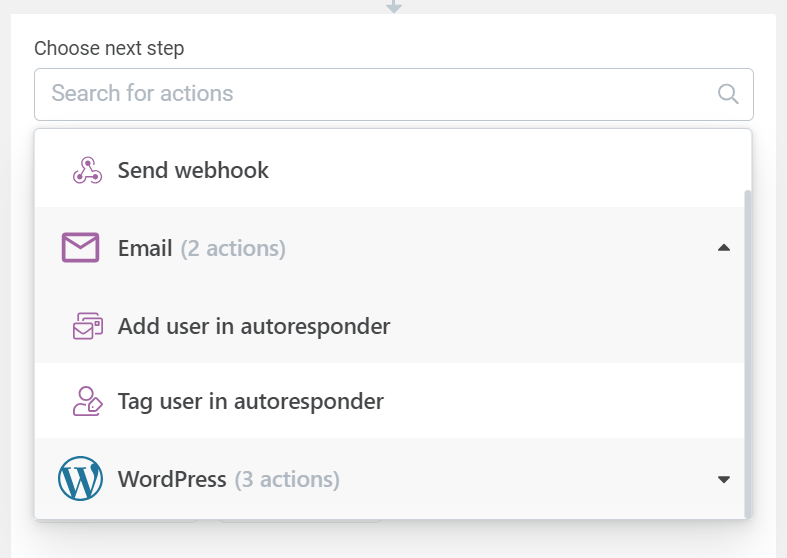
WordPress: through which you can decide whether you’d like to add, remove, or update a user role.

In this example, select “Add user role” as the action, select a user role such as a Subscriber in the following field, and click the Done button.
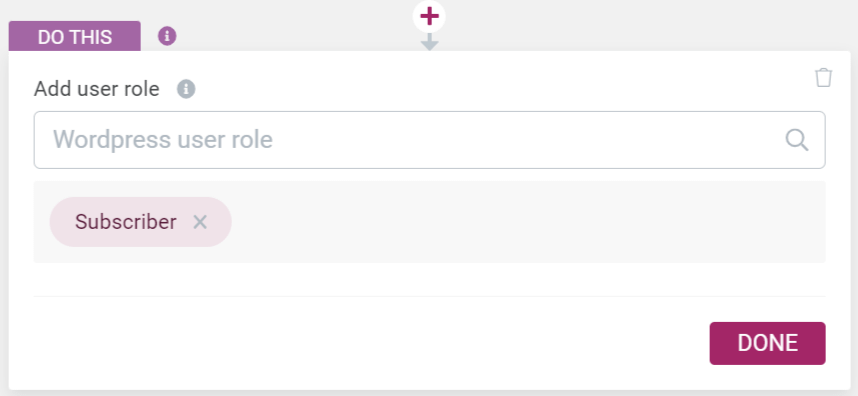
You’ll now see the action added to the flowchart.
You can continue adding actions by clicking the plus (+) icon to add more actions to the automation.

You can read our document to learn more about Actions and Filters in Thrive Automator.
When you add all the required actions to the automation, you can decide whether you’d like to activate the automation immediately.
If you want to activate the automation, click on ACTIVE in the page’s top right corner.

Whether or not you’ve activated the automation, you can save it by clicking the Save and Finish button on the bottom right of the screen.
We’ve just seen how you can install and set up Thrive Automator, a closer look into its dashboard, triggers, actions, and filters, and create automation that’ll assign a Subscriber user role to any new account user.
Frequently Asked Questions About Thrive Automator
I am unable to find a specific trigger or action in Thrive Automator. Where can I find it?
Different reasons may prevent some triggers and actions from being listed. Here are some conditions you can check:
- Having outdated plugins: It is recommended that you have the latest versions of Thrive Automator and all other Thrive products to ensure you see triggers and actions associated with them.
- Inter-dependent actions or triggers: The execution of some actions may depend on the previous action or trigger, so it gets all the parameters required for the execution. Therefore, it is important to match triggers and actions so that they all get the required parameters for the automation to run smoothly. You can read our document to know more.
- Not having the related plugin installed and activated: The triggers and actions related to a specific Thrive product will need the product installed and activated on the website.
Can I integrate Thrive Automator with my service/platform?
You can integrate Thrive Automator with your service or platform using the Send Webhook action or the Incoming Webhook trigger. The integration will work only if the service or platform supports incoming and outgoing webhooks.
Here are some use cases we’ve listed to help you understand how webhooks help to work with Thrive Automator:
- Sending webhooks to any third-party platform
- Interconnect two independent sites using Thrive Automator
- Connecting your Thrive Themes account to Encharge.io using Thrive Automator
What type of data do Thrive Automator triggers and actions use?
Each trigger or action in Thrive Automator may use one or more data sets. You can read more about the type of data Thrive Automator uses here.
Where can I find the full list of current Thrive Automator third-party integrations?
You can find the full list of third-party applications with which you can use Thrive Automator.
I have tried to use the “Send Webhook” action, but the webhook action data is not received/is rejected by the third-party service.
Different third-party services may have different response guidelines. We recommend you read these guidelines and pay attention to what kind of format/fields these services accept.
Our document will help you understand how webhooks are sent to a third-party service.
Next, if you’d like to know the difference between the Thrive Automator Apps and other Thrive Integrations, you can read our document about it.